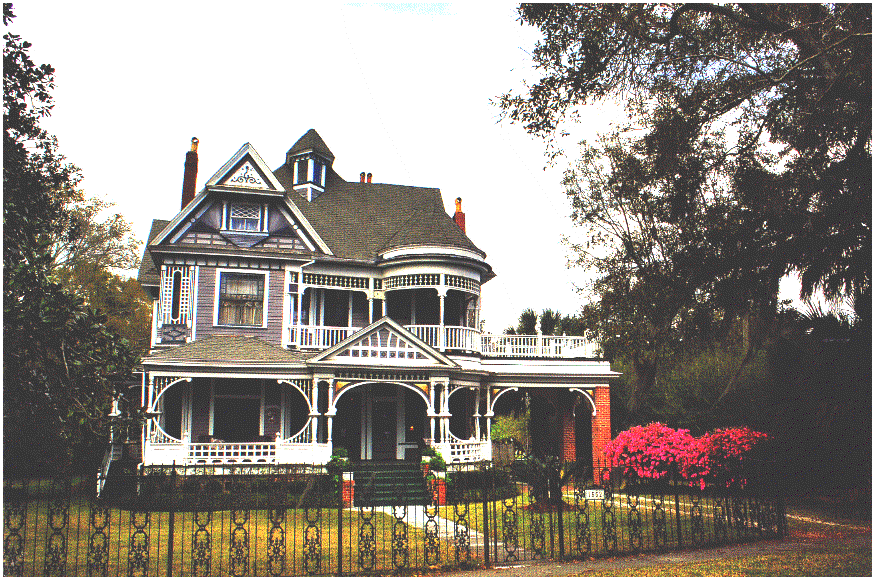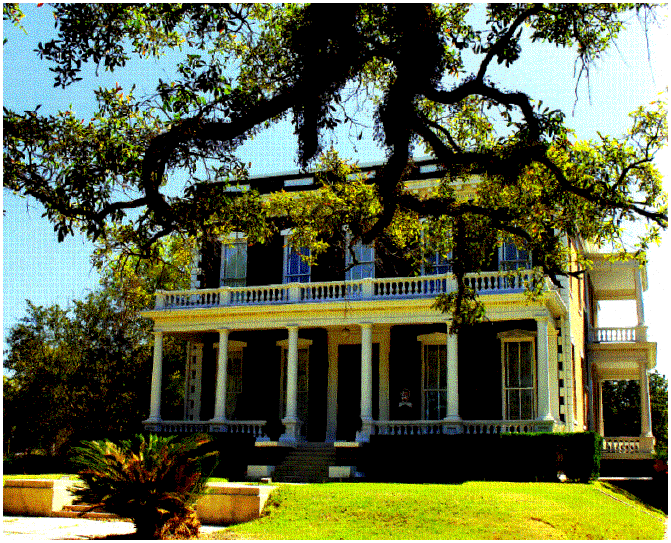
The Majesty of Mobile
Jim Fraiser
(Pelican)

They say that Mobile, Alabama was originally called "Mauvila" ("bad village"), but historians have proven that, no, it was named for the mobile phone which allowed people on one part of the city --- Birdville, say --- to call people in other parts of the city --- in the Battlehouse Tower. In the end, it made no difference because no one in Mobile could communicate with anyone else there because the principal language in that area was known as "Mobilian Jargon." It's a language that everyone speaks but no one understands.If you have any doubts about this, try to get lost driving down Conception Street and then roll down the window of the car and ask any of the locals how to find Government Street. You will need a multi-lingual mobile translator to understand any and all replies.
§ § § The six nations that at one time or another found themselves saddled with Mobile discovered it was nothing but a wasteland of swamps and bayous and unintelligible people coupled with mosquitoes, horse flies, bed bugs, fire ants, and Oriental rat fleas. The French tried to give it to the British, the British tried to give it to the Spanish, and the Spanish, being Spanish, were willing to sell it outright to the United States. Hell, if they had gotten rid of Florida, they would be beside themselves to be done with Alabama.
But then the Civil War came along, so the Republic of Alabama gave it to the Confederate States of America who, after the Battle of Chickamauga, lost interest and were tired of the fleas and ticks anyway so they gave it back to the Yankees who, not having anyone else to give it to, took it and promptly forgot that they owned it. (It is rumored that the famed Admiral David Farragut --- plagued by an insurrection of Highland midges --- was trying to get out of Mobile Bay as quickly as possible. "Damn the torpedoes, full speed ahead," he said (he really said "Damn the midges," but with his heavy Jargon, they thought he said "torpedoes.") The locals cried uncle and tried to sell the city back to the Confederacy, but the Confederacy had gone out of business.
One of the early scions --- Antoine Laumet de la Mothe, sieur de Cadillac --- came to Mobile to found a luxury car company, "The Mothe," but when he found that most of the citizens of Mobile were either layabouts or too busy swatting midges, he departed for the north and within a short while had invented Detroit.
Mobile was then deluged by "casquette girls" --- young ladies taken from orphanages and convents in France and brought to this country to marry needy but honorable young men. Many of these unions foundered --- once again, the Mobilian Jargon was totally impenetrable --- so that the virginal ladies were recristened as the "casket girls" because their husbands died of frustration at not being able to communicate their urgent needs on, say, their wedding nights.
§ § § After WWII, the biggest industry in Mobile was the manufacture of pulp and paper products. Those of us who grew up in towns with large pulp mills will remember with a certain fondness the rank smell that overwhelmed our cities (and our nostrils) on those days when the factories were operating full tilt. It drove people in Mobile to try to find their fortune somewhere, anywhere, else --- or at least start secession proceedings to get the city back in the hands of the French who baked bread rather than cooked up pulp ... which smelled much better.

The Majesty of Mobile has over a hundred color pictures of older homes of the city, and they are well worth your interest and affection. The most salutary were built just before the Civil War and are of Italianate, Federal or Greek Revival style. A dandy example of this last is to be found on Monterey Place --- see Fig. 1 above --- with its spindles, massed gables and circular bay.There is a Gothic Revival cottage on Dauphin Street to die for, with decorative bargeboards and quatrefoil motifs on the gables. On Government Street you will find a Queen Anne-style funeral home (also to die for) with turret, dormers, cupola and pigeon garret for the pigeons. The Italian Renaissance Cathedral of the Immaculate Conception is only so-so from the outside, but the red-gold vaulted ceiling is enough to convert you to the Mother Church posthaste
§ § § Landmark Hall also on Government Street --- see Fig. 2 --- is of Greek and Renaissance Revival (although some call it more simply "Victorian Gingerbread"). According to the text, has marble quoins, whatever they are, and narrow Tuscan columns.
I am not so sure you and I could survive a year in Mobile what with the hurricanes, palmetto bugs, redbugs, doodlebugs, chinchbugs and stinkbugs, but if they did deport us to there to live (or die), let us hope it would be within walking distance of these lovely, well-preserved, and in some cases overwhelmingly colorful mansions with their memories of a more felicitous and leisurely past in a subtropical, oak heavy, heritage-rich, massed glory that tells of a more gentle time.--- Pamela Wylie, AIA